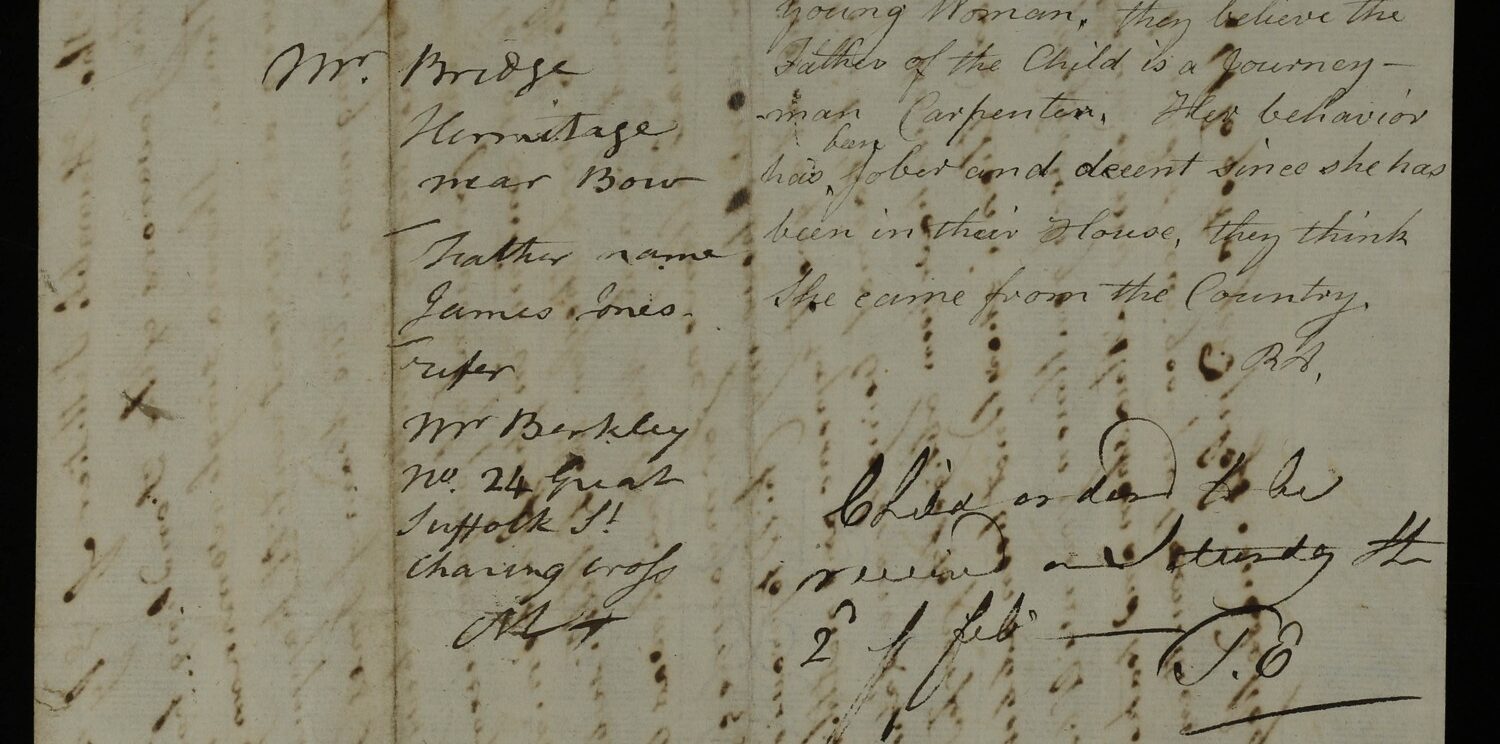This blog is part of Explore Your Archive week. The week organised by the Archives and Records Association for the UK & Ireland is an opportunity for those working with archives to highlight their collections and the work that is being done with them.
Over the week, we’ll be sharing content and stories from our incredible Foundling Hospital archive. We’ll provide insights into our project and the work that is being done to increase access to the archive. We’ll also be celebrating the contributions of the volunteers and the young people who have been working with the archive and learning about the story of care. Check our website and social media over the next week to discover more.
The petition letters of the Foundling Hospital offer detailed accounts of urban labouring class experiences of motherhood from the eighteenth century. Although they capture the often harrowing stories of the mothers’ lives, the letters were rarely penned by these women themselves. Frequently featuring multiple handwriting styles, these documents are extremely important for our understanding of the admissions process to the hospital. However, the different handwriting styles in the petition letters can also tell us about the collaborative nature of eighteenth-century literacy skills among the urban poor.
From 1763, the Foundling Hospital required that mothers seeking admission for their children submitted a petition letter. These textual sources are richly detailed, and often discuss the circumstances of the mother’s pregnancy, employment, and current situation. It was only on rare occasions that these petitions were written by the mother. More often, others were involved in the petition writing process, and this is evident in the variety of handwriting present within individual petition letters.
While some petitioners were able to afford a professional to write down their petition, most women were reliant on the goodwill of literate family, friends, or employers to help them produce their petition letters. In the same way that the mother’s acceptance to ballot was dependent on the testimonials of her family, neighbours, or employers, the construction of her petition also relied on practical support from literate people in her life.
Literacy in the 18th century
Urban literacy rates improved throughout the eighteenth century. However, the concept of literacy itself was more fluid than our understanding of it today. Individuals may have been able to read but not write, have limited ability to do either, or relied on a mixed ability of both writing and reading skills. Most importantly, oral narratives captured by institutional records, including those of the Foundling Hospital, allow us to access the lives and stories of illiterate or semi-literate people from the past.
Even though mothers’ petitions were rarely penned by the mothers themselves, mothers were involved in the letter-writing process through the sharing of their stories with friends, family, or employers. Often, the petition letters feature the mothers’ mark, usually signified by an ‘X’ near her name. Sometimes, the mother signed her name herself. In many instances though, the only evidence of the mother’s involvement in writing the petition is in the content itself.
Despite this, the petition letters offer brilliant insight into not only the mother’s life and her reasons for seeking admission for her child to the Foundling Hospital, but the network of people who could be involved in a single petition. The mother may have used what little money she had spare to employ a professional writer, or asked her neighbours or employers to write on her behalf. Following the submission of the petition letter, various members of staff left their own trace on the petition letters through the addition of handwritten notes.
Collaboration in letter writing
It is apparent through the multiple and varied handwriting within the petition letters that applying for a child’s admission to the Foundling Hospital could be a collaborative process. The mother could draw upon her personal relationships to help craft her petition if she lacked the literacy skills required to do so. Once in circulation within the Foundling Hospital’s admissions process, the letters were further annotated by Hospital staff.
The resulting document is a textual collaboration between mothers, employers, family, friends, and hospital staff. Each person is identifiable by their handwriting style. The insights we can infer from these different handwritings illustrate the importance of both the content and the context of these letters, as they show the multiple people involved in the admission of just one child to ballot.
Amber Vella is a Midlands4Cities funded PhD student at The University of Leicester. Her research explores the experience of pregnancy in Georgian Britain, and the fictional, medical, and personal narratives that were created around this. Her interest in the Foundling Hospital archives stems from her research into eighteenth-century maternity charities; she is particularly interested in the mothers’ petition letters.




